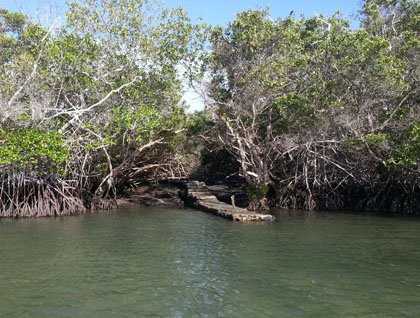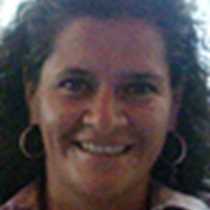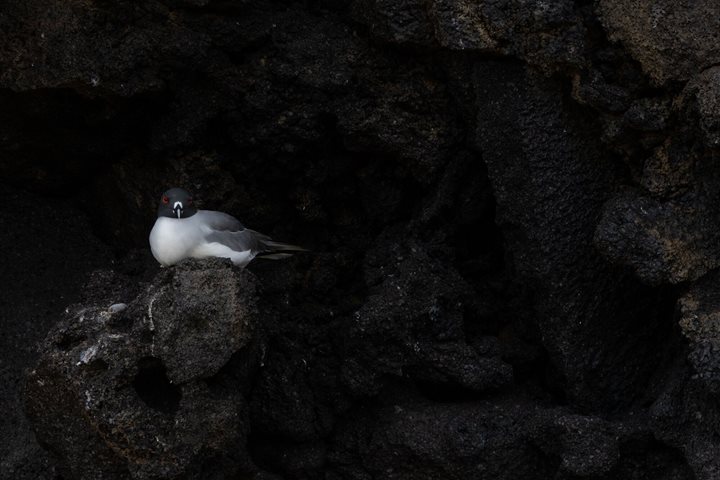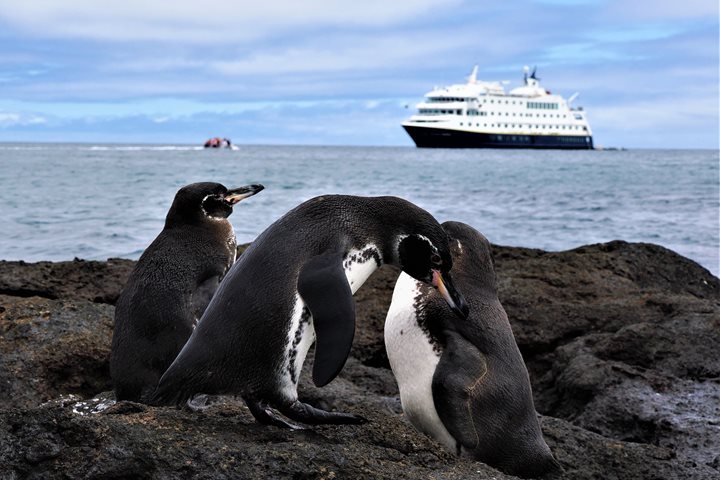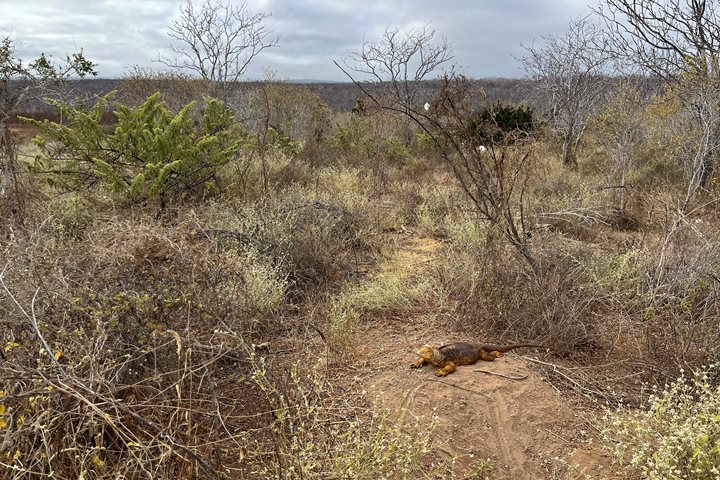Fernandina and Isabela are the westernmost islands of this archipelago and the youngest of them all. We woke up this morning and found ourselves surrounded by a big pod of common dolphins. The captain turned the ship around to let us take pictures of this incredibly acrobatic species. The scenery of the shield-shaped volcanoes made our guest understand what geological time means and how erosion shapes the landscapes of the planet.
We visited Punta Espinoza in the morning, an island that takes us back to very beginning of time. Being the youngest of the chain, Fernandina is around 150,000 years old only, which in geological time is the same as a new born baby. As we started the walk the only thing we saw were the marine iguanas nesting - the mating season has already passed on this island and the females were busy working. As we continued the walk we talked about the very early processes of life taking place. The formation of soil, the simplicity of the ecosystem, and its fragility made us think that the place needs to be conserved so the life cycles of the species that inhabit the area would not be altered by humans and can continue with its evolutionary process.
In the afternoon, we visited Punta Vicente Roca along the coastline of Isabela and saw the unique species that live here. The snorkeling was amazing, and having the opportunity to swim with the sea turtles and the tropical fish made the experience the best so far during the week. Galapagos penguins, the smallest on the globe, flightless cormorants, marine iguanas, and Pacific green sea turtles made our Zodiac ride very enjoyable.
As we crossed the equator at sunset we realized that the overwhelming power of nature is making us feel part of this precious planet that well deserves to be conserved!

